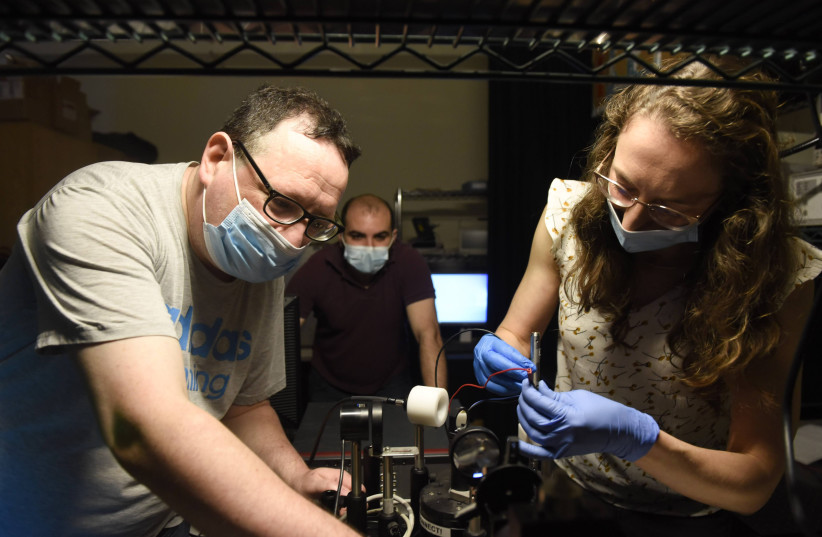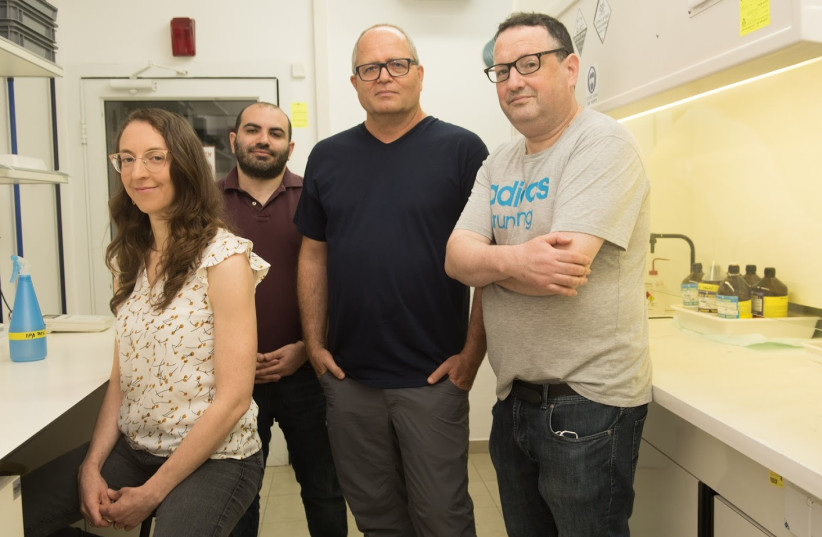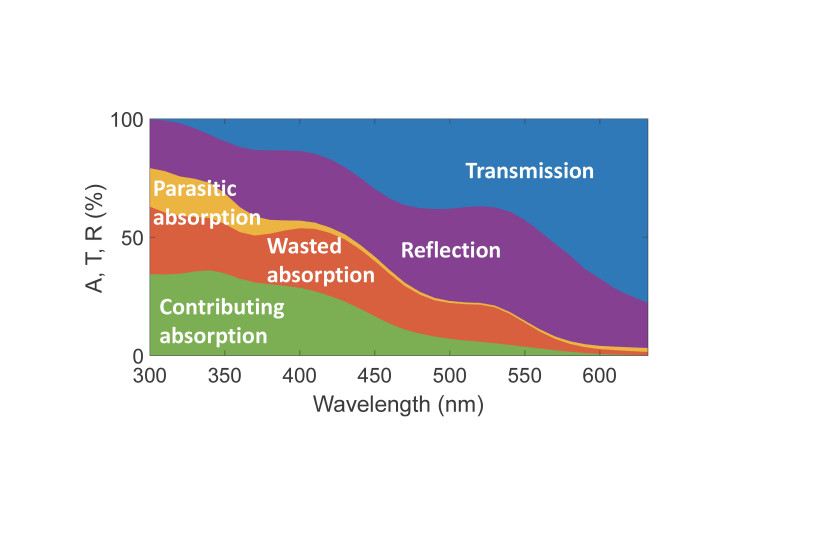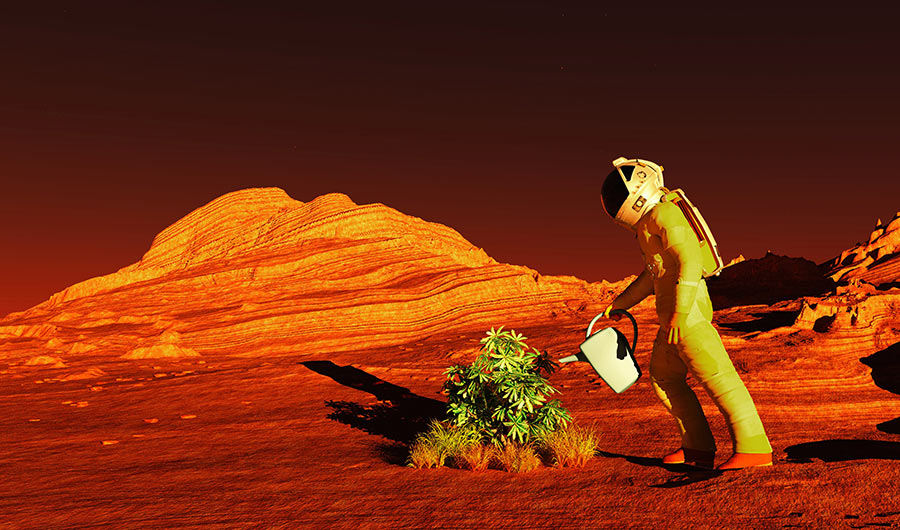Are Radioactive Diamond Batteries the Solution to Nuclear Waste?
These batteries are made from nuclear waste and could last thousands of years.
Nuclear power is considered a clean energy source because it has zero carbon dioxide emissions; yet, at the same time, it produces massive amounts of hazardous, radioactive waste that pile up as more and more reactors are built around the world.
Experts have proposed different solutions for this issue in order to take better care of the environment and people’s health. With insufficient safe storage space for nuclear waste disposal, the focal point of these ideas is the reutilization of the materials.
Radioactive diamond batteries were first developed in 2016 and were immediately acclaimed because they promised a new, cost-effective way of recycling nuclear waste. In this context, it’s unavoidable to deliberate whether they’re the ultimate solution to these toxic, lethal residues.
What Are Radioactive Diamond Batteries?
Radioactive diamond batteries were first developed by a team of physicists and chemists from the Cabot Institute for the Environment of the University of Bristol. The invention was presented as a betavoltaic device, which means that it’s powered by the beta decay of nuclear waste.
Beta decay is a type of radioactive decay that occurs when an atom’s nucleus has an excess of particles and releases some of them to obtain a more stable ratio of protons to neutrons. This produces a kind of ionizing radiation called beta radiation, which involves a lot of high-speed and high-energy electrons or positrons known as beta particles.

Beta particles contain nuclear energy that can be converted into electric energy through a semiconductor.
A typical betavoltaic cell consists of thin layers of radioactive material placed between semiconductors. As the nuclear material decays, it emits beta particles that knock electrons loose in the semiconductor, creating an electric current.
However, the power density of the radioactive source is lower the further it is from the semiconductor. On top of this, because beta particles are randomly emitted in all directions, only a small number of them will hit the semiconductor, and only a small number of those will be converted into electricity. This means that nuclear batteries are much less efficient than other types of batteries. This is where the polycrystalline diamond (PCD) comes in.
The radioactive diamond batteries are made using a process called chemical vapor deposition, which is widely used for artificial diamond manufacture. It uses a mixture of hydrogen and methane plasma to grow diamond films at very high temperatures. Researchers have modified the CVD process to grow radioactive diamonds by using a radioactive methane containing the radioactive isotope Carbon-14, which is found on irradiated reactor graphite blocks.
Diamond is one of the hardest materials that humanity knows — it’s even harder than silicon carbide. And it can act as both a radioactive source and a semiconductor. Expose it to beta radiation and you’ll get a long-duration battery that doesn’t need to be recharged. The nuclear waste in its interior fuels it over and over again, allowing it to self-charge for ages.
However, the Bristol team warned that their radioactive diamond batteries wouldn’t be suitable for laptops or smartphones, because they contain only 1g of carbon-14, meaning that they provide very low power —only a few microwatts, which is less than a typical AA battery. Therefore, their application so far is limited to small devices that must stay unattended for a long time, such as sensors and pacemakers.
Nano Diamond Radioactive Batteries
The origins of nuclear batteries can be traced back to 1913, when English physicist Henry Moseley found out that particle radiation could generate an electric current. In the 1950s and 1960s, the aerospace industry was very interested in Moseley’s discovery, as it could potentially power spacecraft for long-duration missions. The RCA Corporation also researched an application for nuclear batteries in radio receivers and hearing aids.
But other technologies were needed in order to develop and sustain the invention. In this regard, the usage of synthetic diamonds is seen as revolutionary, as it provides safety and conductivity to the radioactive battery. With the addition of nanotechnology, an American company built a high-power nano-diamond battery.

Based in San Francisco, California, NDB Inc. was founded in 2012 with the objective of creating a cleaner and greener alternative to conventional batteries. The startup introduced its version of diamond-based batteries in 2016 and announced two proof-of-concept tests in 2020. It’s one of the firms that is attempting to commercialize radioactive diamond batteries.
Nano-diamond batteries from NDB are described as alpha, beta, and neutron voltaic batteries and have several new features according to their website.
- Durability. The firm calculates that the batteries could last up to 28,000 years, which means that they could reliably power space vehicles in long-duration missions, space stations, and satellites. Drones, electric cars, and aircraft on Earth would never need to make stops to be recharged.
- Safety. Diamond is not only one of the hardest substances, but also one of the most thermally conductive materials in the world, which helps protect against the heat produced by the radioisotopes that the battery is built with, turning it into electric current very quickly.
- Market-friendliness. Thin-film layers of PCD in these allow the battery to allow for different shapes and forms. This is why nano-diamond batteries can be multipurpose and enter different markets, from the aforementioned space applications to consumer electronics. The consumer version would not last more than a decade, though.
Nano-diamond batteries are scheduled to come onto the market in 2023.
Arkenlight, the English firm commercializing Bristol’s radioactive diamond battery, plans on releasing their first product, a microbattery, to the market in the latter part of 2023.
The Future of Radioactive Diamond-Based Batteries
The portability of modern electronic devices, the increasing popularity of electric vehicles, and the 21st Century race to take humanity on long space missions to Mars have triggered a growing interest in battery technology research in the last few years.
Some types of batteries are more appropriate for certain applications and not as useful for others. But we can say that the conventional lithium-ion batteries that we are familiar with won't be replaced with radioactive diamond batteries any time soon.
Conventional batteries last a shorter time, but they are also much cheaper to manufacture. However, at the same time, the fact that they do not last that long (they have a lifespan of about five years) is problematic, because they also produce a great deal of electronic waste, which is not easy to recycle.
Radioactive diamond batteries are more convenient, because they have a much longer lifespan than conventional batteries. If they can be developed into a universal battery, like NDB Inc. proposes, we could end up with smartphone batteries that last much longer than the life of the smartphone, and we could simply change the battery from one phone to the next, much as we now transfer the SIM card.
However, the diamond betavoltaics developed by Arkenlight won't go that far. The company is working on designs that stack up lots of their carbon-14 betabatteries into cells. To provide high power discharge, each cell could be accompanied by a small supercapacitor, which could offer an excellent quick-discharge capability.
However, this radioactive material also has a lifespan of more than 5000 years. If that radiation were to leak out of the device in gaseous form, it could be a problem. That's where the diamonds come in. In the diamond formation, the C-14 is a solid, so it can't be extracted and absorbed by a living being.
The United Kingdom Atomic Energy Authority (UKAEA) calculated that 100 pounds (approximately 45 kg) of carbon-14 could allow the fabrication of millions of long-duration diamond-based batteries. These batteries could also reduce the costs of nuclear waste storage.
University of Bristol researcher Professor Tom Scott told Nuclear Energy Insider that, “By removing the Carbon-14 from irradiated graphite directly from the reactor, this would make the remaining waste products less radioactive and therefore easier to manage and dispose of. Cost estimates for disposing of the graphite waste are 46,000 pounds ($60,000) per cubic meter for Intermediate Level Waste [ILW] and 3,000 pounds ($4,000) per cubic meter for Low-Level Waste [LLW]."
Don’t all these features make them one of the best options for the sustainable future that we need? We’ll have to wait and see if the manufacturers can find a way of dealing with production costs and low energy output, and get their diamond-based batteries onto the market cost-effectively and accessibly.











